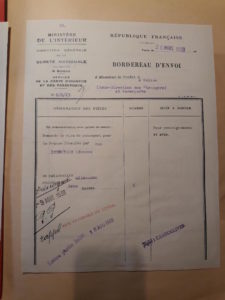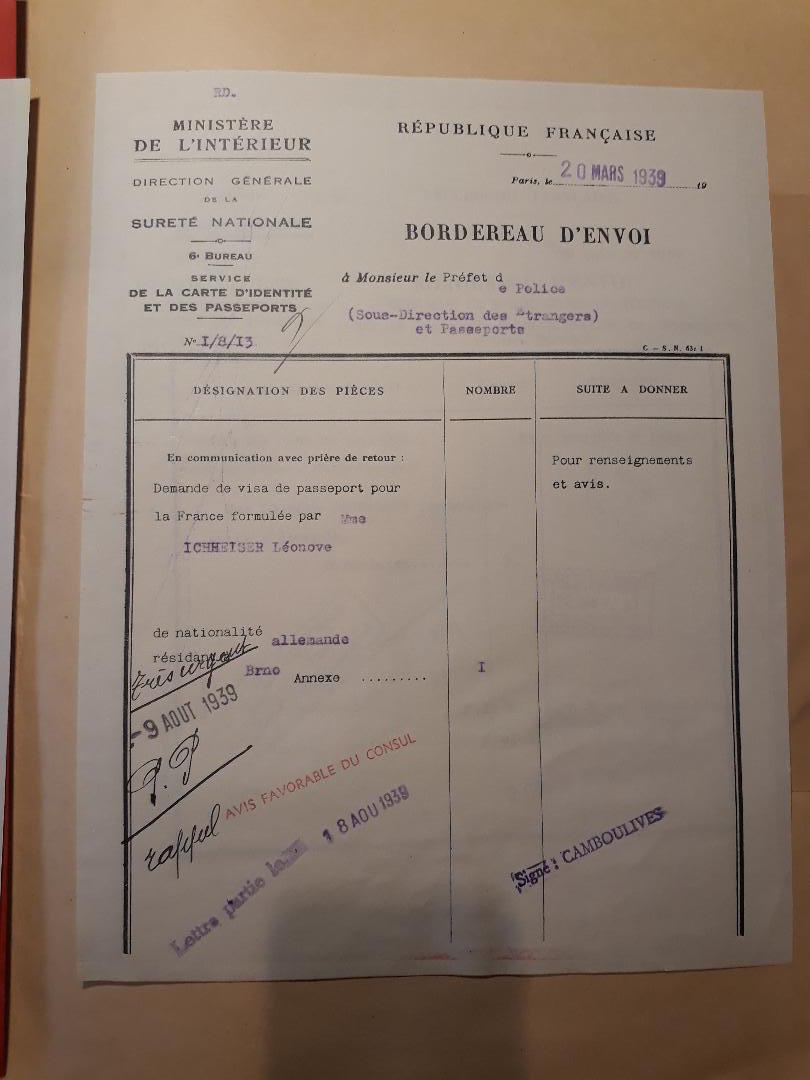Léonore Ichheiser
This is an outline biography of Léonore Ichheiser, which could be expanded upon in future by another class.
Léonore Ichheiser was born Léonore Bondy (Bondyová) on August 1,, 1913 in Opava, in what was then Austria-Hungary.
Opava was a town in Silesia, which was near the Austro-Prussian border. It was a multicultural area with Austrian, Prussian, Czech and Polish influences. At the age of 5, Léonore’s nationality changed, because in 1918 Austria-Hungary ceased to exist and Opava became part of Czechoslovakia.
The multiculturality of her Jewish, Austrian and Czechoslovakian background was further emphasized by her marriage to Ferdinand Ichheiser, born on January 15, 1888 in Biala, in present-day Poland. He was also of Jewish origin. What is interesting is the age difference between Ferdinand and his wife. Unfortunately we were unable to find any further information about their relationship. We can assume that the Jewish minorities in Czechoslovakia and Poland, especially in the Silesia region, were closely related to each other in spite of the borders, since the city of Opava and the city of Biala were not far from each other.
As the expansion of Nazi Germany progressed in the late 1930s, Czechoslovakia was one of the first victims. After the Munich agreements in 1938, the border territory, the Sudetenland, was annexed by the Germans. Opava was part of this region. Therefore we can conclude that at that time, at the end of 1938, Ferdinand and Léonore decided to leave their country on account of the persecution of the Jews in Germany.
On March 20, 1939, 5 days after the occupation of the rest of Czechoslovakia, they were in the city of Brno, where they obtained a visa to go to France. They must have made it, since the information we have comes from Paris. They stayed at the Refugee Center in Argenteuil. According to our sources they were involved in helping other refugees.
In 1940 they had a difficulty in finding housing, probably because the center where they had been staying was closed down. Léonore and her husband contacted the Police headquarters in Paris to renew their residence permit in France. What is interesting is the fact that a member of the Rothschild family, Baron Robert de Rothschild, gave several assurances regarding their loyalty and morals. We do not have sufficient information on Léonore after France was occupied by the Germans, but according to our research she could have been interned at the Gurs camp in Béarn, in the Pyrénées-Atlantiques department. From September 1940 the Gurs camp was used to intern foreign Jews, and some documents show that Jews deported from Paris in August 1944 had come from there. However, we have not been able to confirm this hypothesis.
In any case, what happened to her in 1944 is clear. Sources show that in the summer of 1944 she found herself back in Paris, where she was arrested, interned in the Drancy camp and deported on Convoy 77. The convoy’s destination was of course the Auschwitz camp. However, as the war continued and the liberation of Auschwitz drew near, Léonore was moved to a concentration camp in Kratzau (now the Czech town of Chrastava), near Liberec in Northern Bohemia. There she was forced to work, together with many prisoners from France. Fortunately, she survived the war and was liberated by the Red Army in May 1945.
The period after the war is another time of her life for which we were unable to find much information. She probably threw in her lot with France, as she was employed either at the French Embassy in Prague or at the Czechoslovak Embassy in Paris as a typist. This information has yet to be verified.
Our research is obviously not very comprehensive and needs to be continued. However, through our work we were able to uncover an interesting story and see how the life of a 20th century woman was affected by a number of major political changes.
Students from the Bohumil Hrabal high school in Nymburk, in the Czech Republic.
Sources:
http://www.chrastava.com/listy/journal_f.pdf – the Chrastava City Hall newsletter commemorating the 50th anniversary of the liberation of the Kratzau camp and the end of the war.
http://ressources.memorialdelashoah.org/notice.php?q=Ichheiser&spec_expand=1&start=0 – the Shoah Memorial in Paris
http://www.campgurs.com/ the Gurs camp

23236-ICHHEISER-Leonore_Archive Pierrefitte 4

23236-ICHHEISER-Leonore_Archive Pierrefitte 8
Contributor(s)
Students from the Bohumil Hrabal high school in Nymburk, in the Czech Republic, with the guidance of their French and history teacher, Mr. Pavel Kotyza.


 Français
Français Polski
Polski










